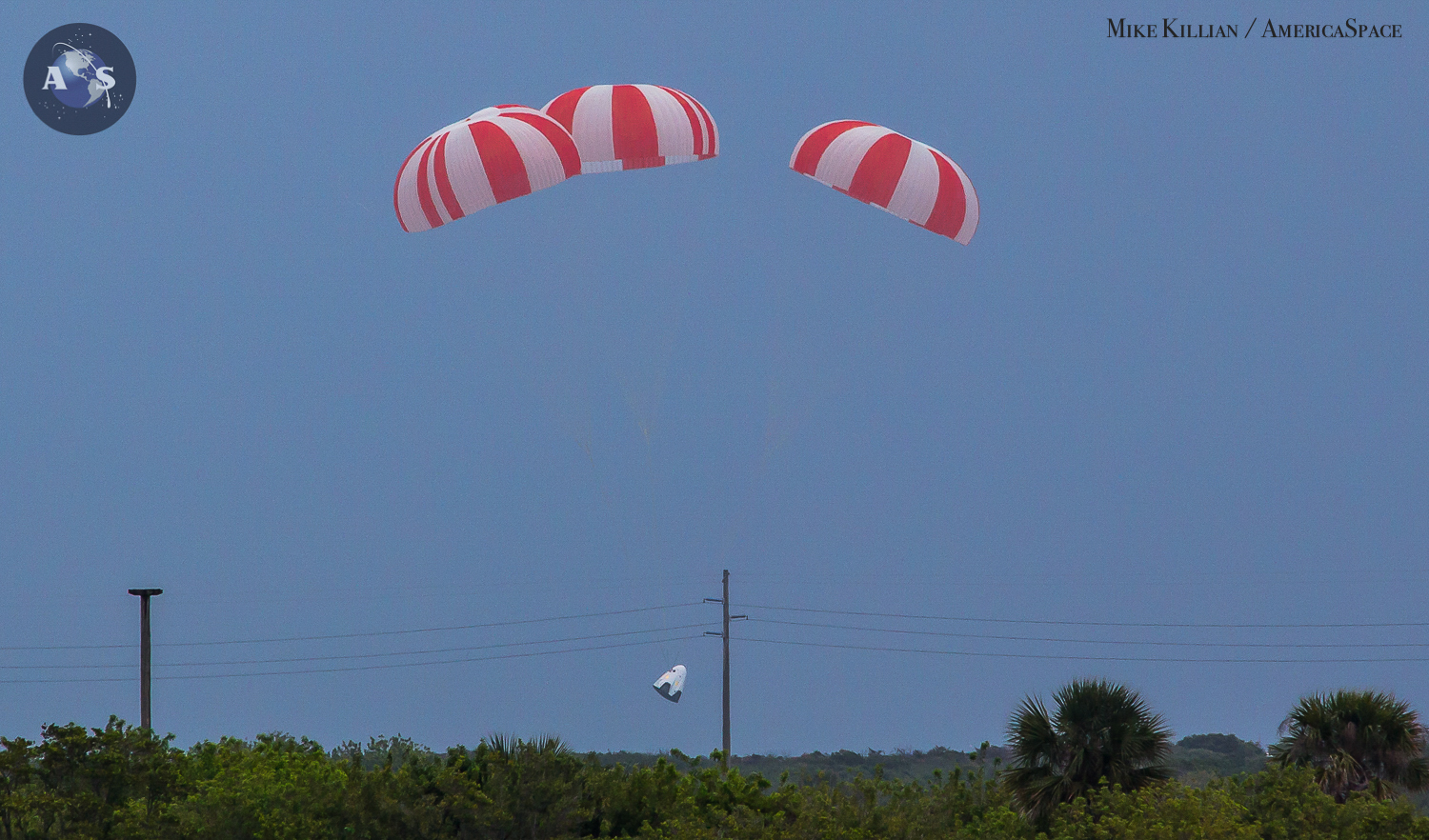
After two months aboard the International Space Station (ISS), Dragon Endeavour astronauts Doug Hurley and Bob Behnken will bid farewell to their Expedition 63 crewmates Chris Cassidy, Anatoli Ivanishin and Ivan Vagner on Saturday and undock from the sprawling orbital outpost for their return to Earth on Sunday afternoon. Current plans are for Hurley and Behnken to participate in a short farewell ceremony with Cassidy, Ivanishin and Vagner shortly after 9 a.m. EDT Saturday morning, before hatches between the station and their Crew Dragon are closed for departure.
According to NASA, teams are continuing to monitor the progress of Category 1 Hurricane Isaias and evaluating impacts to weather, with seven potential splashdown locations identified off Florida’s east and west coasts. Early Friday morning, Isaias was tracked about 45 miles (70 km) off the southeastern tip of the Bahamas. NASA and SpaceX will make a decision on the primary splashdown location about six hours before Saturday’s undocking.
Undocking is presently scheduled for 7:34 p.m. EDT Saturday, after which the eight remarkable weeks of “Bob and Doug’s Excellent Adventure” will still have about 19 hours left to run, before they splash down in the Atlantic Ocean off the Florida coastline at 2:42 p.m. EDT Sunday. An on-time landing will wrap up their Demo-2 mission with a total duration of 63 days, 23 hours and 20 minutes and more than 1,000 orbits of Earth.
The homecoming of Dragon Endeavour—which Hurley and Behnken named in honor of the long-since-retired Space Shuttle of the same name that both men flew on their first space missions—marks the first-ever return of a commercially developed, orbital-class space vehicle with humans aboard. Although SpaceX’s Demo-1 test flight in March of last year and Boeing’s troubled CST-100 Starliner test flight last December achieved smooth and on-point landings of human-capable ships, neither actually did so with astronauts on-board.
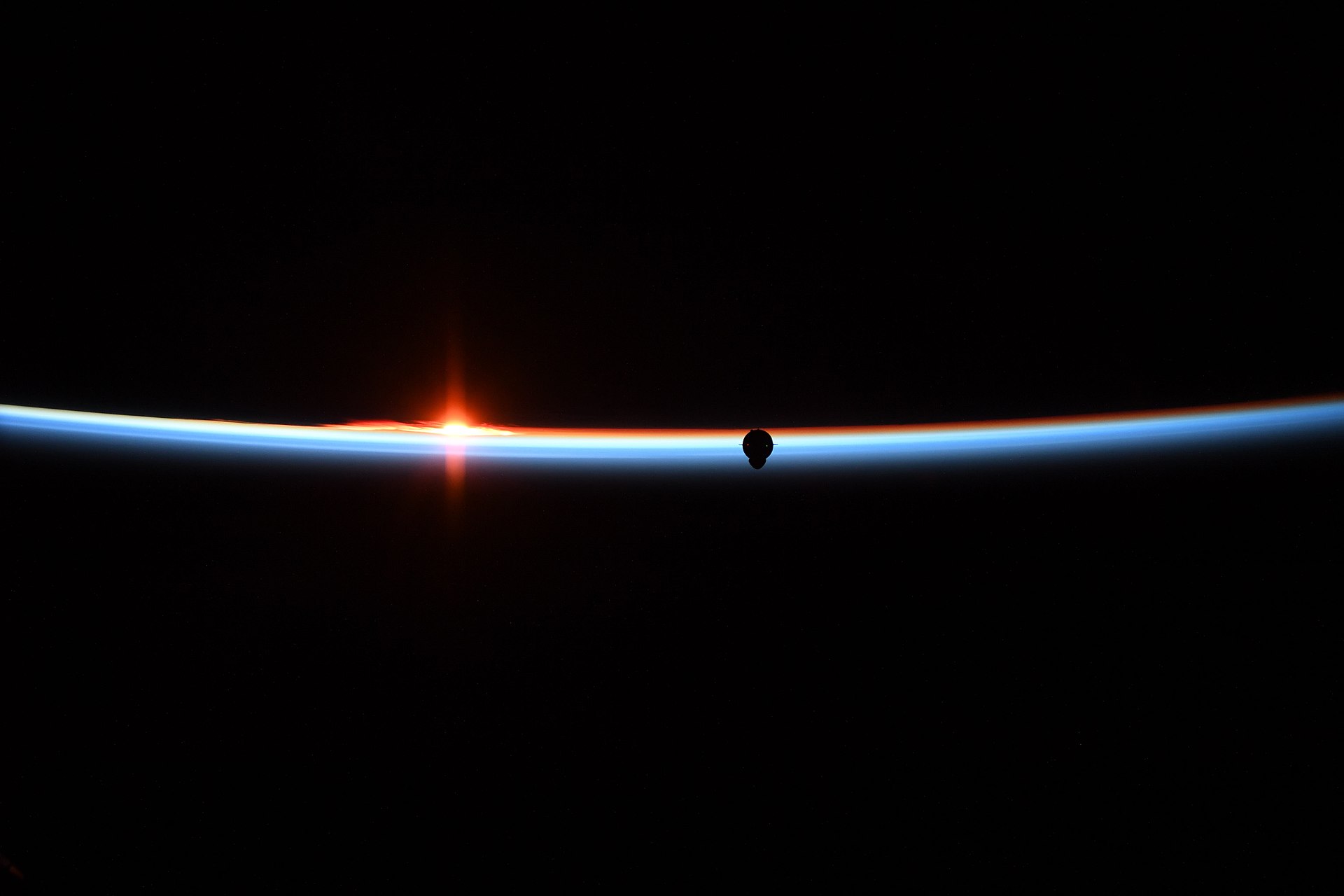
Hurley and Behnken will also undertake the United States’ first oceanic splashdown of an astronaut crew since the return of Apollo-Soyuz Test Project (ASTP) crewmen Tom Stafford, Vance Brand and Deke Slayton on 24 July 1975. And as SpaceX President Gwynne Shotwell remarked before Dragon Endeavour’s launch on 30 May, she and many others will doubtless enjoy little chance for calm or relaxation until Hurley and Behnken are home and safely aboard the recovery vessel.
The mission’s return date has been a subject of great speculation in recent weeks, with the fuselage-hugging solar arrays considered a primary limiting factor which permits Dragon Endeavour to remain on-orbit for up to 119 days. However, an approximately two-month stay was realistically timelined from the outset and on 17 July NASA Administrator Jim Bridenstine announced 2 August as the target return date. In the days which followed—and in addition to supporting the last of four grueling sessions of Extravehicular Activity (EVA) to replace aging nickel-hydrogen batteries in the S-6 truss segment with smaller, lighter and more capable lithium-ion units—Hurley and Behnken worked to ready their ship for its homecoming.
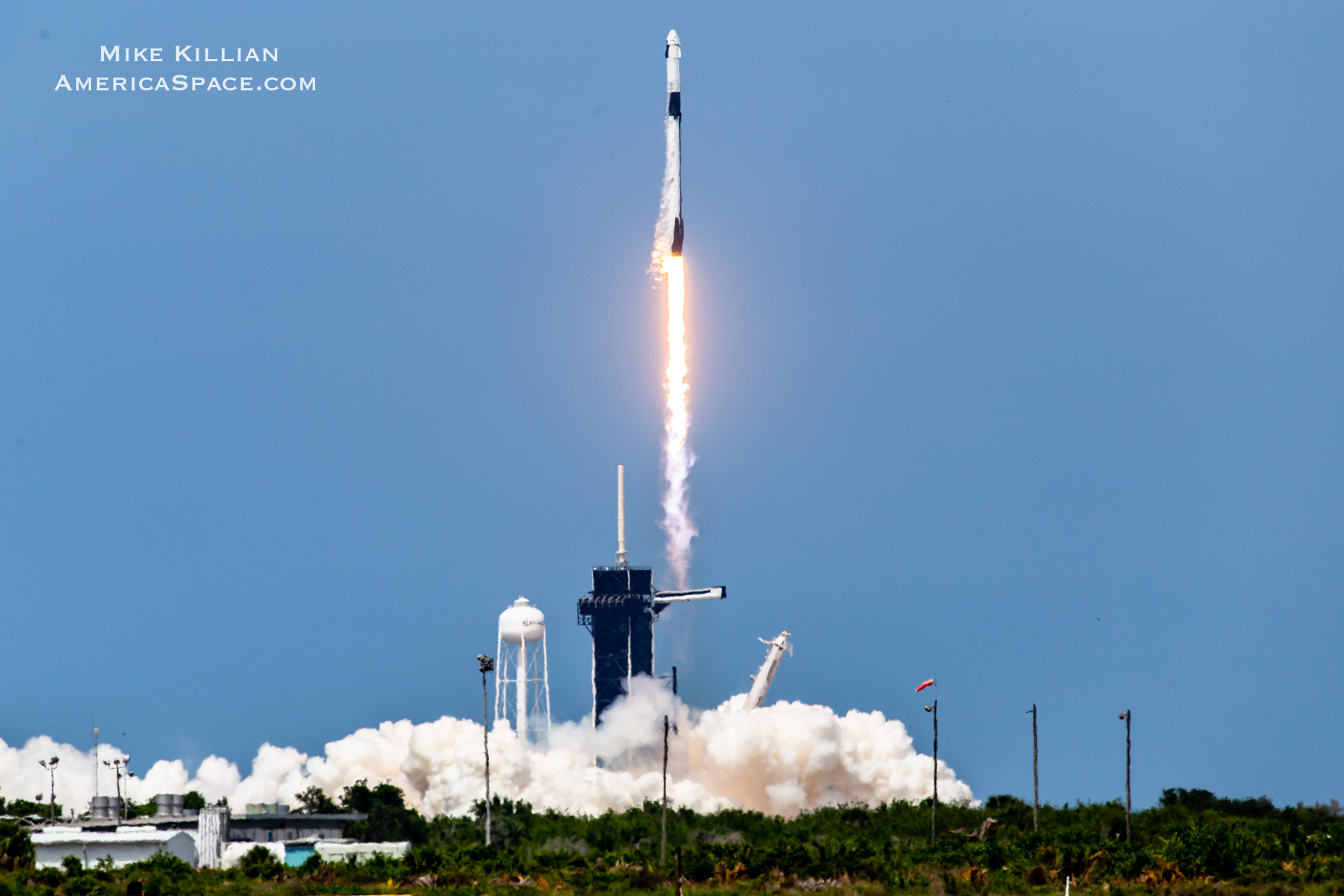
Last week, they packed clothing, personal items and other gear and also tried their customized SpaceX launch and entry suits for a fit check. Hopefully Behnken, who celebrated his 50th birthday in space last Tuesday and was presented with miniature chocolate cakes to mark the occasion, will have no difficulties squeezing back into his suit for tomorrow’s departure and return to Earth.
Last Wednesday, NASA and SpaceX teams wrapped up the Return Flight Readiness Review to examine the status of systems, and of course weather, in anticipation of this weekend’s departure, re-entry and splashdown. Summarizing the events of the day, Commercial Crew Program Manager Steve Stich noted that hatch closure should occur about 5:30 p.m. EDT on Saturday, with a one-hour undocking “window” that is expected to see Dragon Endeavour physically separate from the sprawling multi-national outpost at about 7:34 p.m. EDT.
Mr. Stich outlined seven potential splashdown locations off the Florida coast: Jacksonville, Daytona and the Cape itself to the east and Pensacola, Panama City, Tallahassee and Tampa to the west. He also explained that conditions at sea—with wind speeds no greater than 10 mph (16 km/h), wave heights and periods within strictly mandated limits to protect the structural integrity of Dragon Endeavour’s heat shield and no rain or lightning in order to safeguard her four parachutes—must be optimum for Hurley and Behnken to return safely.
An area of disturbed weather in the tropics remains the overarching concern, with the possibility that it could organize into a tropical storm in the coming days. The decision of which splashdown location will be chosen is due in the final hours before undocking. Mr. Stich added that a scrub on Saturday would mean that the next available opportunity to undock would occur on Monday, with an expectation that NASA and SpaceX will “take it day by day” via specific decision-points and that the team has “plenty of opportunities in August” to bring the crew home.
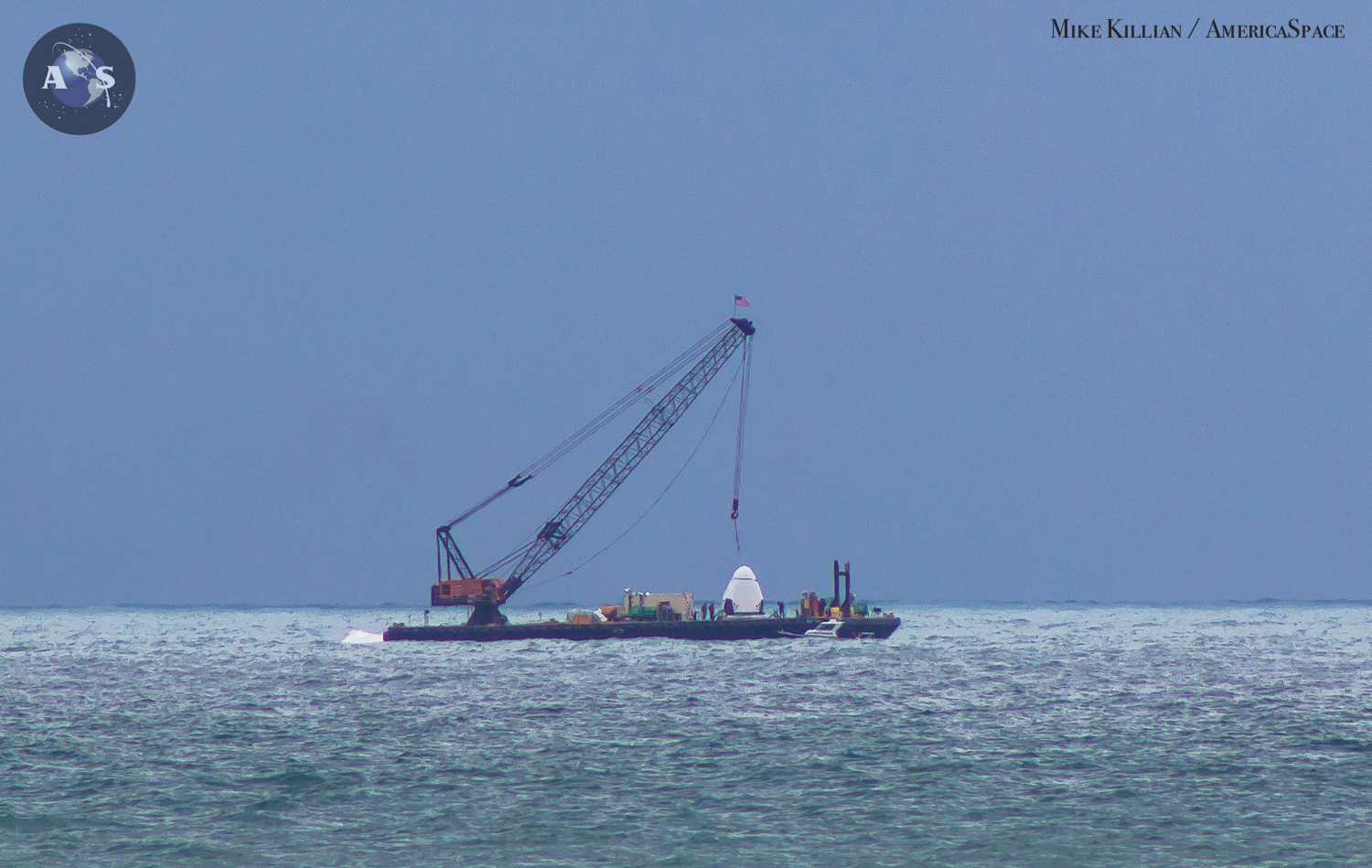
Assuming Dragon Endeavour departs on time tomorrow evening, she will execute a series of departure firings of her SuperDraco thrusters, ahead of the separation of her trunk and the final deorbit “burn”, which is timelined for shortly before 2 p.m. EDT Sunday. This will commit Hurley and Behnken to a landing a little under an hour later. In addition to the SpaceX recovery vessels “Go Searcher” and “Go Navigator”, the Department of Defense has also provided Detachment-3 search and rescue personnel and assets in support of the return and a C-17 aircraft and others are standing by at Hickam Air Force Base in Hawaii in the extreme unlikelihood that an off-nominal landing in the Pacific should occur.
Following splashdown under her four main parachutes, Dragon Endeavour will be approached in the water by a couple of fast boats to check that she is in a safe configuration for the recovery vessels to approach. They will pay particular attention to the possibility of hypergolic leaks or other issues, before the Go Searcher or Go Navigator begins the process of hoisting the capsule into a “nest” on the deck.
It is expected the Dragon Endeavour will be used again next spring to carry Crew-2—whose four-person complement actually includes Behnken’s wife, veteran astronaut and until recently Deputy Chief of the Astronaut Office Megan McArthur—to the station. In comments provided after the Return Flight Readiness Review, SpaceX Director of Crew Mission Management Benji Reed said that data will be extracted from Dragon Endeavour’s on-board flight recorders immediately after recovery and that full refurbishment will be conducted in Florida. This is expected to significantly improve the spacecraft’s turnaround for its upcoming mission.
The process will be a meticulous one. “We want to be sure we dig deep”, he explained, adding that the good ship Endeavour will receive upgraded solar panels on a brand-new trunk ahead of Crew-2. All told, Mr. Reed anticipates the full refurbishment of a Crew Dragon to require only a couple of months, before it is ready to be sent off on another multi-month ISS increment. In the meantime, the Crew Dragon assigned to the Crew-1 mission—set to launch no sooner than the end of September—is expected to be transported from SpaceX’s facility in Hawthorne, Calif., to the Cape in the first week of August. Its Falcon 9 booster arrived in Florida earlier in July.




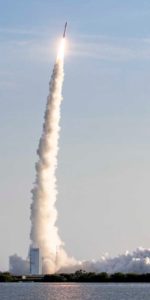
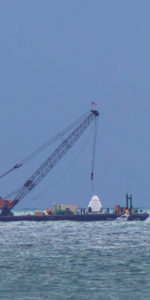
Why the Pacific? Is it because of the tropical storm on the east coast this week?
Where is the Pacific mentioned?